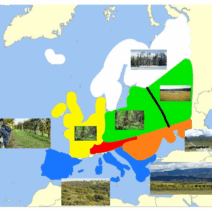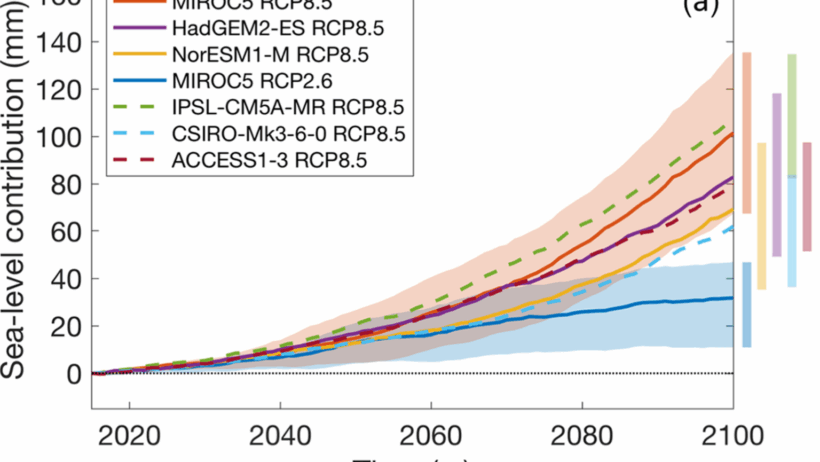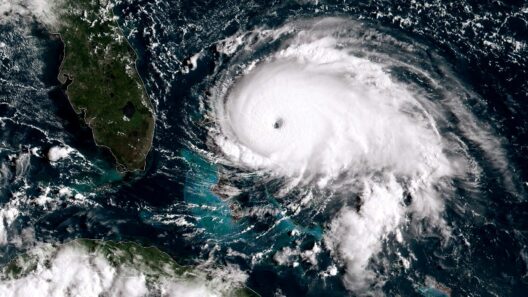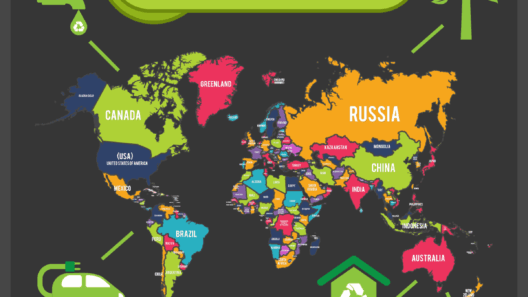As climate change continues to reshape our planet, one of the most alarming consequences is the rise in sea levels. This phenomenon, largely driven by global warming, encapsulates a myriad of environmental threats. Understanding the intricacies of rising tides reveals both the immediacy of the crisis and the necessity of proactive measures.
The Earth’s oceans cover over 70% of the planet’s surface, serving as a vital component of the global climate system. They act as thermal reservoirs, absorbing approximately 90% of the excess heat generated by greenhouse gas emissions. However, this heat absorption leads to thermal expansion of the water, contributing significantly to rising sea levels. When combined with another alarming factor—the melting of polar ice sheets and glaciers—the picture becomes increasingly grim.
The Greenland and Antarctic ice sheets are colossal reservoirs of freshwater, and their stability is critical for maintaining current sea levels. Unfortunately, these ice masses are succumbing rapidly to the incrementing temperatures. In Greenland, the rate of ice melt has accelerated dramatically, with scientists estimating that it contributes to approximately 0.6 millimeters of sea-level rise each year. Similarly, Antarctica has been losing ice at an unprecedented rate, with some studies suggesting that this loss may double in the coming decades.
But the repercussions of rising sea levels extend far beyond the immediate geographical loss of land. Coastal ecosystems, which harbor an incredible diversity of flora and fauna, are under siege. Mangroves, salt marshes, and coral reefs play a crucial role in sequestering carbon, serving as natural barriers against storm surges and flooding. As sea levels rise, these essential ecosystems are threatened, leading to habitat loss, increased coastal erosion, and diminution of biodiversity.
This ecological destabilization is further compounded by anthropogenic factors. Dense urban coastal regions, where millions of people reside, face heightened vulnerability. Major cities such as Miami, New York City, and Jakarta are on the front lines of potential inundation. With projections estimating that by 2050, over 300 million people could be displaced due to rising tides, the social implications are staggering. This mass relocation could exacerbate existing inequities, create humanitarian crises, and ignite conflicts over dwindling resources.
As the crisis escalates, the consequences of inaction become increasingly evident. Infrastructure developments that once appeared secure are now at risk. Roads, bridges, and public transport systems designed with previous sea-level benchmarks are rendered vulnerable, necessitating substantial investments in adaptation measures. Retrofitting existing structures or constructing new ones that can withstand the harsh impacts of climate change requires capital that many municipalities simply do not possess.
Yet, amidst this daunting scenario, there lies an opportunity for innovation and sustainability. The paradigm shift towards renewable energy sources must encompass a focus on coastal resilience. Harnessing solar, wind, and wave power can not only reduce greenhouse gas emissions but also protect vulnerable coastal areas through nature-based solutions like artificial reefs and restored mangrove forests.
Moreover, understanding and addressing the socio-political dimensions of rising sea levels is crucial. Policymakers must prioritize equitable solutions that consider the needs of marginalized communities at risk of displacement. In countries where populations depend heavily on coastal livelihoods, integrating climate adaptation strategies into economic development plans can help build resilience against the onslaught of climate change.
Public awareness and education are paramount in this fight against rising sea levels. Engaging local communities in discussions about climate resilience can foster a culture of preparedness and stewardship. By leveraging technology, such as mobile applications that track sea-level changes and flooding, individuals can become actively involved in monitoring their environment and advocating for necessary changes.
While efforts to mitigate climate change through international agreements have gained traction, it is equally vital to invest in adaptive frameworks that enhance resilience against rising tides. Coastal cities can develop comprehensive adaptation strategies, including implementing green infrastructure that integrates nature into urban planning. Elevating buildings, restoring wetlands, and creating buffer zones are practical measures that can bolster defenses against flooding.
International cooperation is also crucial in addressing this global challenge. The interconnectivity of economic and environmental systems transcends national borders. Collaborative efforts around innovation in water management technologies, data sharing, and financial mechanisms are essential to pave the way for sustainable solutions. The global community must align on a unified front, recognizing that rising sea levels are not a distant threat; they are a present reality that demands immediate action.
Ultimately, rising sea levels serve as a poignant reminder of the pressing climate crisis. They encapsulate the intricate interplay between global warming and the existential threats to our coastal communities, ecosystems, and livelihoods. By fostering a comprehensive understanding of the science, advocating for equitable policies, and engaging in collective action, there lies potential for a transformative approach to climate change. It compels us to reevaluate our relationship with the environment and shape a future that harmonizes human development with ecological sustainability.
In this context, each of us has a role to play in questioning the status quo and pushing for systemic change. The tides may be rising, but collective action can ensure that we are not submerged by their relentless advance.







